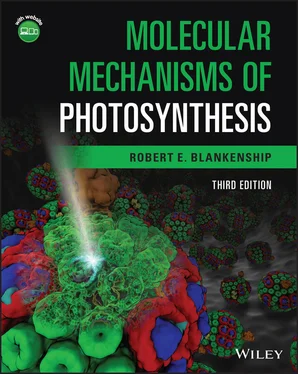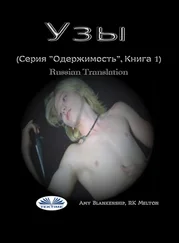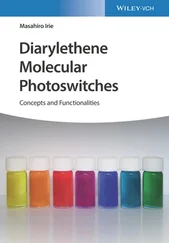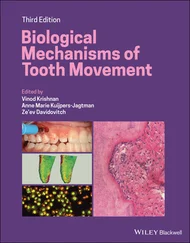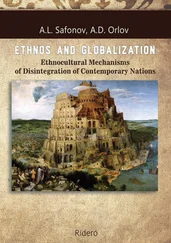9 Chapter 9Figure 9.1 Lollipop apparatus used by Melvin Calvin and Andrew Benson in stu...Figure 9.2 Autoradiograms of two‐dimensional paper chromatograms used by Cal...Figure 9.3 Three stages of the Calvin–Benson cycle: carboxylation, reduction...Figure 9.4 Calvin–Benson cycle for reduction of CO 2in photosynthesis. The i...Figure 9.5 Structure of spinach rubisco. (a) Model of the L 8S 8active comple...Figure 9.6 Chemical steps of carboxylation in rubisco. RuBP binds to the act...Figure 9.7 Carbamylation of lysine in rubisco. A CO 2molecule reacts with th...Figure 9.8 Carboxylation and oxygenation reactions of rubisco. RuBP reacts w...Figure 9.9 Reduction phase of the Calvin–Benson cycle. PGA is phosphorylated...Figure 9.10 Thioredoxin‐mediated redox control of enzyme activity. Ferredoxi...Figure 9.11 Photorespiratory cycle. The 2‐phosphoglycolate formed in the oxy...Figure 9.12 Anatomical differences between C3 and C4 plants. (a) A C4 plant,...Figure 9.13 C4 pathway found in the NADP‐malic enzyme type of C4 photosynthe...Figure 9.14 Crassulacean acid metabolism avoids water loss by temporally sep...Figure 9.15 Schematic picture of the carbon‐concentrating mechanism found in...Figure 9.16 Carboxysome structure and function. Left: Schematic model of car...Figure 9.17 Starch and sucrose synthesis reactions provide for long‐term sto...Figure 9.18 Alternative CO 2fixation pathways in anoxygenic phototrophs. (a)...
10 Chapter 10Figure 10.1 The photosynthesis gene cluster from Rhodobacter sphaeroides . Ge...Figure 10.2 A working model for the import of proteins into chloroplasts. Pr...Figure 10.3 A model for the routing of lumenal targeted proteins and thylako...Figure 10.4 Origin of the major proteins of the photosynthetic apparatus in ...Figure 10.5 Scheme describing the assembly of Photosystem II in cyanobacteri...
11 Chapter 11Figure 11.1 Chlorophyll a fluorescence induction transients of a pea leaf (k...Figure 11.2 Fluorescence measurements illustrate the induction of nonphotoch...
12 Chapter 12Figure 12.1 Schematic picture of the origin and early evolution of life. The...Figure 12.2 An alternative picture of the tree of life, incorporating massiv...Figure 12.3 The composition of the Earth's atmosphere as a function of geolo...Figure 12.4 Proposed primitive reaction centers. (a) A possible very primiti...Figure 12.5 Evolution of metabolic pathways. (a) Retrograde hypothesis of Ho...Figure 12.6 Ring reduction steps of the biosynthetic pathway for chlorophyll...Figure 12.7 Chemistry and structure of the light‐independent protochlorophyl...Figure 12.8 Electron transport diagrams for anoxygenic (left and right sides...Figure 12.9 Scenario for the evolutionary development of reaction centers fr...Figure 12.10 Structural relationships among photosynthetic reaction centers....Figure 12.11 Membrane topology diagram describing the arrangement of the tra...Figure 12.12 Proposals regarding the evolutionary development of organisms w...Figure 12.13 Chemical structures of chlorophyll a , bacteriochlorophyll a , 3‐...Figure 12.14 Evolutionary scenario for the conversion of the reaction center...Figure 12.15 Evolutionary scenario for the development of the LHC class of a...Figure 12.16 Evolutionary processes involving phycobilisome antennas and LHC...Figure 12.17 Secondary endosymbiotic origin of algae. The primary endosymbio...
13 Chapter 13Figure 13.1 Sources of energy used on Earth from 1994 till 2019. Vertical ax...Figure 13.2 Diurnal cycle of light intensity (colored red) and modeled rate ...Figure 13.3 Concept of reduction of antenna size as a way to increase the ef...Figure 13.4 Molecular triad for artificial photosynthesis. (a) Structure of ...Figure 13.5 Artificial antenna complex, consisting of anthracene derivatives...Figure 13.6 Schematic diagram of an artificial leaf. The water‐splitting act...
14 Appendix 1Figure A1.1 Properties of light waves. (a) The wavelength is the distance be...Figure A1.2 Black body emission curves, predicted by Eq. (A1.4). Curves are ...Figure A1.3 Redox measurements to determine electrochemical potentials. (a) ...Figure A1.4 First‐order kinetic decay. (a) Direct plot of concentration of s...Figure A1.5 Parallel first‐order decay processes. (a) Reaction scheme. (b) T...Figure A1.6 Stern–Volmer plot of fluorescence intensity vs . quencher concent...Figure A1.7 Sequential first‐order reactions under three different relative ...Figure A1.8 (a) Activation energy barrier for a chemical reaction. (b) Arrhe...Figure A1.9 (a) Energy level diagram for a simple two‐level system. (b) Stic...Figure A1.10 Potential energy curve for a diatomic molecule. The energy of t...Figure A1.11 Classical and quantum mechanical harmonic oscillator. (a) Diagr...Figure A1.12 Molecular orbital diagram for a typical organic molecule. (a) G...Figure A1.13 Singlet–triplet vector diagram. The singlet state has spins opp...Figure A1.14 Potential energy diagrams and spectra for absorption and fluore...Figure A1.15 Excited state decay pathways. S 0is the ground electronic state...Figure A1.16 Absorption spectroscopy. (a) Derivation of Beer–Lambert law. (b...Figure A1.17 (a) Block diagram of a UV/V is absorption spectrophotometer. (b...Figure A1.18 Results from a flash photolysis experiment. (a) Difference spec...Figure A1.19 Transient absorption (TA) results of the phycobiliproteins from...Figure A1.20 Block diagram of a fluorescence spectrophotometer.Figure A1.21 Excited state redox behavior. (a) Ground state. (b) Excited sta...
1 Cover Page
2 Title Page
3 Copyright Page
4 Dedication Page
5 Introduction to the third edition
6 Acknowledgements
7 About the companion website
8 Table of Contents
9 Begin Reading
10 Appendix 1 Light, energy, and kinetics
11 Index
12 Wiley End User License Agreement
1 iii
2 iv
3 v
4 xiii
5 xiv
6 xv
7 xvii
8 1
9 2
10 3
11 4
12 5
13 6
14 7
15 8
16 9
17 10
18 11
19 12
20 13
21 14
22 15
23 16
24 17
25 18
26 19
27 20
28 21
29 22
30 23
31 24
32 25
33 26
34 27
35 28
36 29
37 30
38 31
39 32
40 33
41 34
42 35
43 36
44 37
45 38
46 39
47 40
48 41
49 42
50 43
51 44
52 45
53 46
54 47
55 48
56 49
57 50
58 51
59 52
60 53
61 54
62 55
63 56
64 57
65 58
66 59
67 60
68 61
69 62
70 63
71 64
72 65
73 66
74 67
75 68
76 69
77 70
78 71
79 72
80 73
81 74
82 75
83 76
84 77
85 78
86 79
87 80
88 81
89 82
90 83
91 84
92 85
93 86
94 87
95 88
96 89
97 90
98 91
99 92
100 93
101 94
102 95
103 96
104 97
105 98
106 99
107 100
108 101
109 102
110 103
111 104
112 105
113 106
114 107
115 108
116 109
117 110
118 111
119 112
120 113
121 114
122 115
123 117
124 118
125 119
126 120
127 121
128 122
129 123
130 124
131 125
132 126
133 127
134 128
135 129
136 130
137 131
138 132
139 133
140 134
141 135
142 136
143 137
144 138
145 139
146 140
147 141
148 142
149 143
150 145
151 146
152 147
153 148
154 149
155 150
Читать дальше
